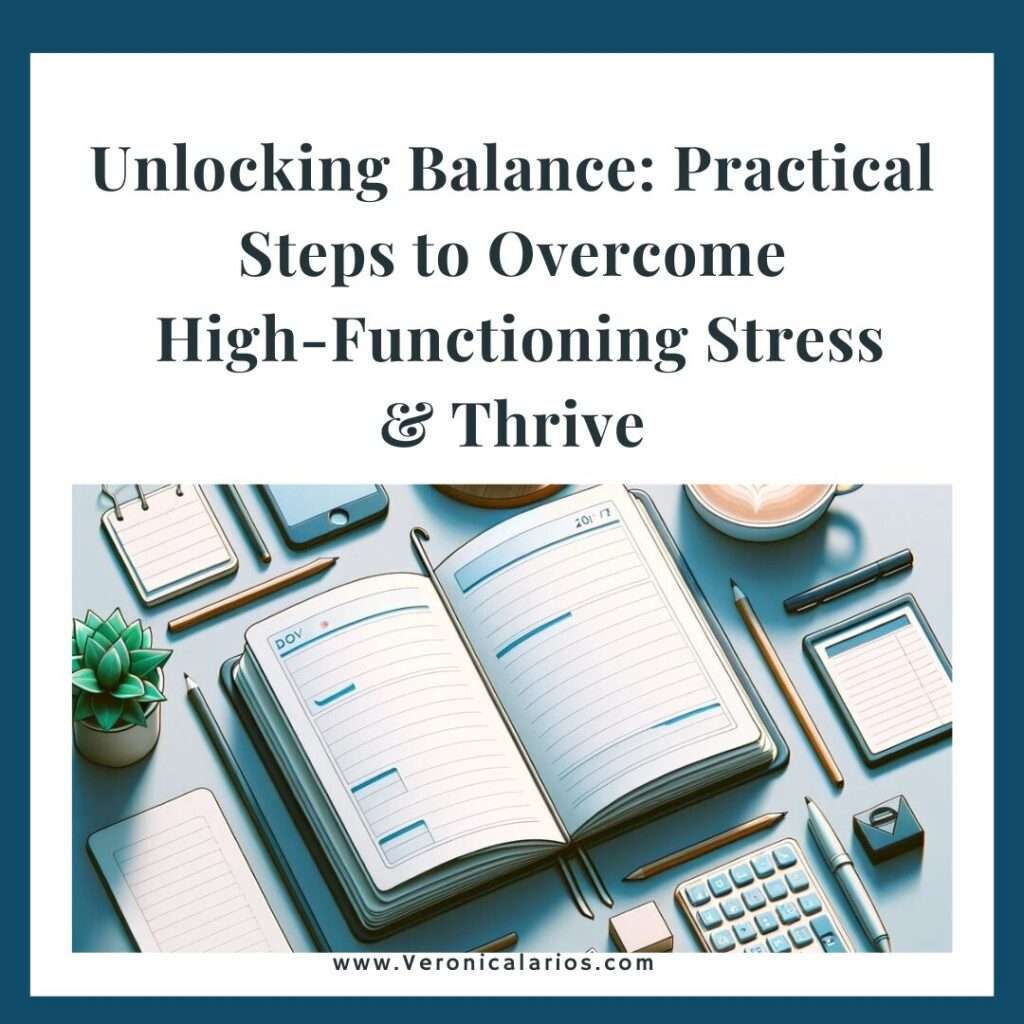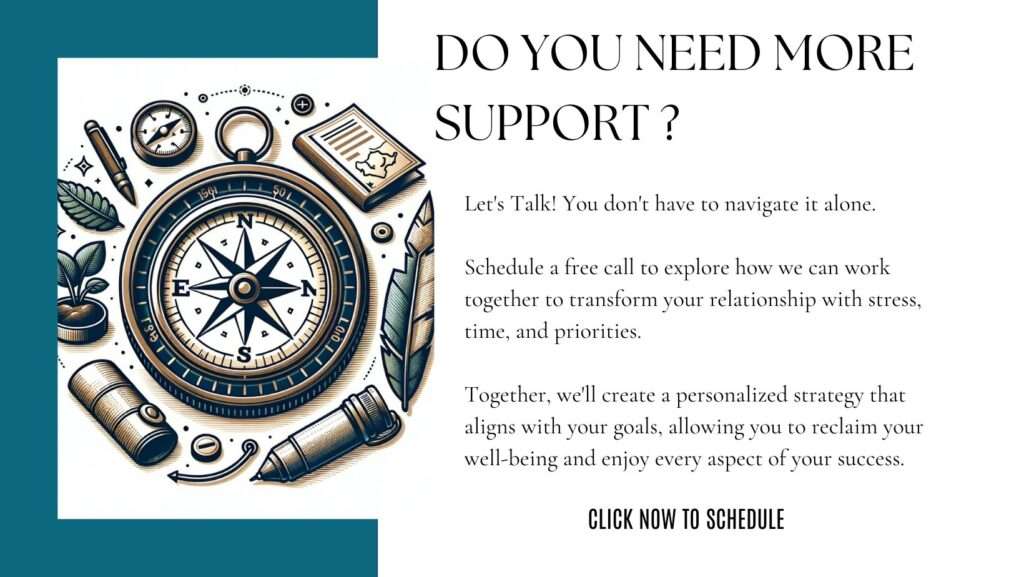High-Functioning stress is a very common occurrence for many of us.
Ever caught yourself wondering if you’re the only one who looks like they’ve got it all together but feels like its autopilot engaged mode? Let’s walk through a day in life, shall we?
Sam’s got a lot on their plate: a business that’s finally taking off, two kids that light up their world, and a partner they adore. To the outside world, Sam is killing it—promotions, a happy family, you name it. But here’s the thing: inside, Sam’s running on fumes.
Sam starts every day before dawn, coffee in one hand, phone in the other, racing through emails before the house wakes up. They’re juggling client meetings, kids’ soccer games, and date nights like a pro. But when the lights go out, Sam’s mind races with thoughts of tomorrow’s to-do list, wondering if they said the right thing in that meeting or if the kids are happy.
Sounds familiar, right?
This is the reality for many of us: high-functioning on the outside, but struggling in silence on the inside. We’re managing everything that life throws at us, but sometimes, it feels like we’re just one step away from dropping all the balls we’re juggling.
So, what’s really going on? Well, it’s like we’re operating in survival mode, constantly on edge because we’re trying to meet these insanely high expectations we set for ourselves. We’re so good at keeping up appearances that sometimes, we don’t even realize how much we’re struggling. Or worse, we know it but don’t want to admit it because, hey, everyone else seems to be handling their stuff just fine, right?
What can high-functioning stress also feel like?
High-functioning stress sneaks up on you, wearing the guise of productivity and success. It’s that constant buzz in the back of your mind, pushing you to do more, be more, never letting up. Initially, it feels like you’re on top of the world, juggling everything life throws at you with grace. But beneath that polished exterior, the cracks start to show.
Sleep becomes a luxury rather than a necessity, your mind races at a hundred miles an hour even in moments of stillness, and irritability becomes your new default, often catching you (and those closest to you) off guard.
The thing about high-functioning stress is that it’s a master of disguise. You might not even realize it’s there until the physical symptoms kick in. Headaches become a regular part of your day, your stomach ties itself in knots for no apparent reason, and your energy levels? They fluctuate more than the stock market. It’s like your body is trying to wave a white flag, signaling that it’s time to slow down, but the message gets lost in the shuffle of daily tasks and responsibilities.
Over time, the effects of living in this heightened state of alertness can take a toll not just on your physical health, but on your emotional and mental well-being too. Relationships can suffer as your patience wears thin and your ability to be present with loved ones diminishes. Your performance at work might start to slip, as the creativity and passion that once drove you give way to the autopilot mode of just getting through the day. And perhaps most importantly, your relationship with yourself can become strained, as you struggle to remember the last time you did something purely for the joy of it, without feeling guilty or considering it a waste of precious time.
But here’s the deal: it’s okay to admit that you’re not okay. In fact, it’s more than okay—it’s necessary. So, what can we do about it?
Here are some actionable steps to start now if you can relate with high-functioning stress:
Start with checking in, how Are You, Really?
Actionable Step: Implement a daily check-in ritual. Set aside a few minutes each morning or evening to reflect on your emotional and mental state. Use a journal or an app to track your mood and thoughts over time, helping you identify patterns and triggers of your stress.
You can also write it down. Every night, jot down what success meant for you that day—beyond work achievements. Include moments of connection, a new insight, or a personal milestone. This practice helps balance your perception of success, recognizing value in various aspects of life.
Start with one moment during the day
Actionable Step: Don’t overwhelm yourself and try to accomplish and overdo it, that makes it hard to be consistent in the beginning. Instead start with just a few minutes a day. You can just take a break to check-in.
As you get more comfortable you can start experimenting with different methods such as mindfulness, deep breathing exercises, or even short meditative breaks during your day. Find what works best for you and make it a part of your daily routine.
Spotting the Invisible Weight
Actionable Step: Create a “worry list”. Whenever you feel overwhelmed, write down what’s on your mind. Next to each item, note a step you can take to mitigate that worry, or mark it as “out of my control”. What keeps many of us up at night is the items that we may not know what to do about- and some of these are out of your control items. Writing them down can help you focus on actionable solutions and release unnecessary stress.
Your Time, Your Rules
Actionable Step: Conduct a weekly time audit. No, you don’t have to be formal or overcomplicate things. Yet doing this will be how you can see where your time is actually spent – especially with the things that are not written down on your calendar. It’s amazing how many times my clients realize that those “not on the schedule” things take up so much of their week!
So for one week, track how you spend your hours, then review. Identify time drains and activities that don’t align with your priorities. Gradually see, is there any one thing that you can replace? Are there intentional breaks or is anything missing?
Put What You Love on That Calendar
Actionable Step: Now that you have seen where your time is, its time to schedule “joy blocks”. Identify activities that bring you joy and block out time for them in your calendar, treating them with the same importance as a work meeting. This ensures you’re dedicating time to recharge and engage in activities that nurture your well-being. Now, this may not be easy at first and you start small with 15 minute blocks but having it in there is a reminder of taking care of yourself. With proper time management over time it can help reduce the internal stress you are feeling day.
A Chat Can Change Everything
Actionable Step: Establish a support circle. This could be friends, family, medical professional, a professional coach, or a therapist. Initiate regular conversations to share your experiences and feelings. Sometimes, verbalizing your stress can illuminate solutions and provide comfort in knowing you’re supported. While we may be able to handle some of the stressors getting support can give you the techniques to be able to address the long-term impacts especially if you are not feeling physical symptoms.
Coaching Support I offer to help address high-functioning stress
Here’s where my coaching support can come in. Working with a coach can provide you with personalized strategies to manage stress, set realistic goals, and improve your work-life balance. Working with clients, I coach them to help recognize your limits, identify areas for growth, and develop a plan to achieve your personal and professional objectives while maintaining your well-being.
Remember, being successful doesn’t mean you have to sacrifice your mental and emotional health. It’s about finding a balance that works for you and understanding that it’s perfectly fine to seek support when you need it. Just like Sam, you’re not alone in this. Let’s tackle it together and chat about breaking free and filling your schedule with joy, not just tasks.


